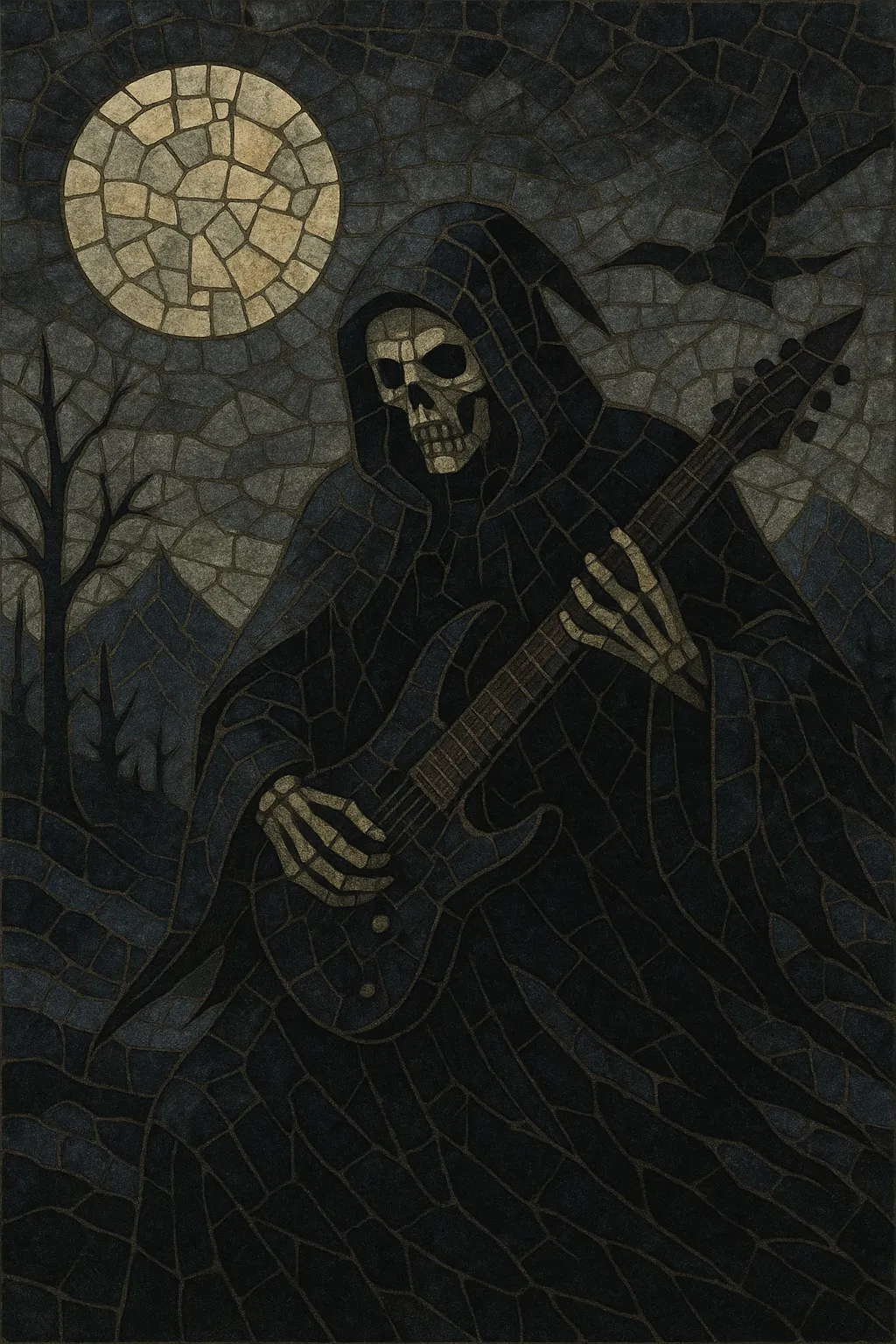Melodic black metal blends the cold, tremolo-picked fury of second‑wave black metal with the twin‑guitar harmonies, lead motifs, and songcraft associated with melodic death metal.
It retains rasped vocals, blast beats, and a bleak atmosphere, but favors clearer production, memorable guitar themes, and dramatic minor‑key progressions over lo‑fi abrasion. The result is a sound that is simultaneously aggressive and epic, often evoking wintery landscapes, nihilism, myth, and existential grandeur.
Melodic black metal took shape in Sweden during the mid‑1990s as musicians fused the riffing, atmosphere, and vocal style of second‑wave black metal with the melodic sensibilities of the Gothenburg school of melodic death metal. Pioneering touchstones include Dissection’s The Somberlain (1993) and Storm of the Light’s Bane (1995), Sacramentum’s Far Away from the Sun (1996), Naglfar’s Vittra (1995), Dawn’s Slaughtersun (1998), and Unanimated’s Ancient God of Evil (1995). These records emphasized harmonized leads, minor‑key themes, and tight song structures without abandoning the genre’s icy ferocity.
Where raw black metal prioritized harsh production and textural repetition, the melodic strain adopted clearer mixes, layered guitars, and memorable motifs. Its melodies are typically drawn from natural minor and harmonic minor, with frequent use of pedal tones, contrary motion, and dual‑guitar harmonies in thirds and sixths. The style remained distinct from symphonic black metal by relying on guitars rather than keyboards to carry the melodic weight.
Beyond Sweden, related scenes blossomed in Norway (Old Man’s Child, Keep of Kalessin) and Germany (Dark Fortress, later Thulcandra paying explicit homage to the Swedish sound). While some bands drifted toward symphonic or progressive directions, the core meloblack approach—tremolo‑picked themes over blasts, dramatic cadences, and melancholic grandeur—remained intact.
By the 2010s, a new wave of groups revived the classic Swedish template (e.g., Thulcandra) while others hybridized it with atmospheric, post‑, or blackgaze elements. The genre’s emphasis on strong melodic through‑lines helped normalize melody‑forward writing in black metal at large and informed modern symphonic and blackgaze bands’ riffing approaches.


